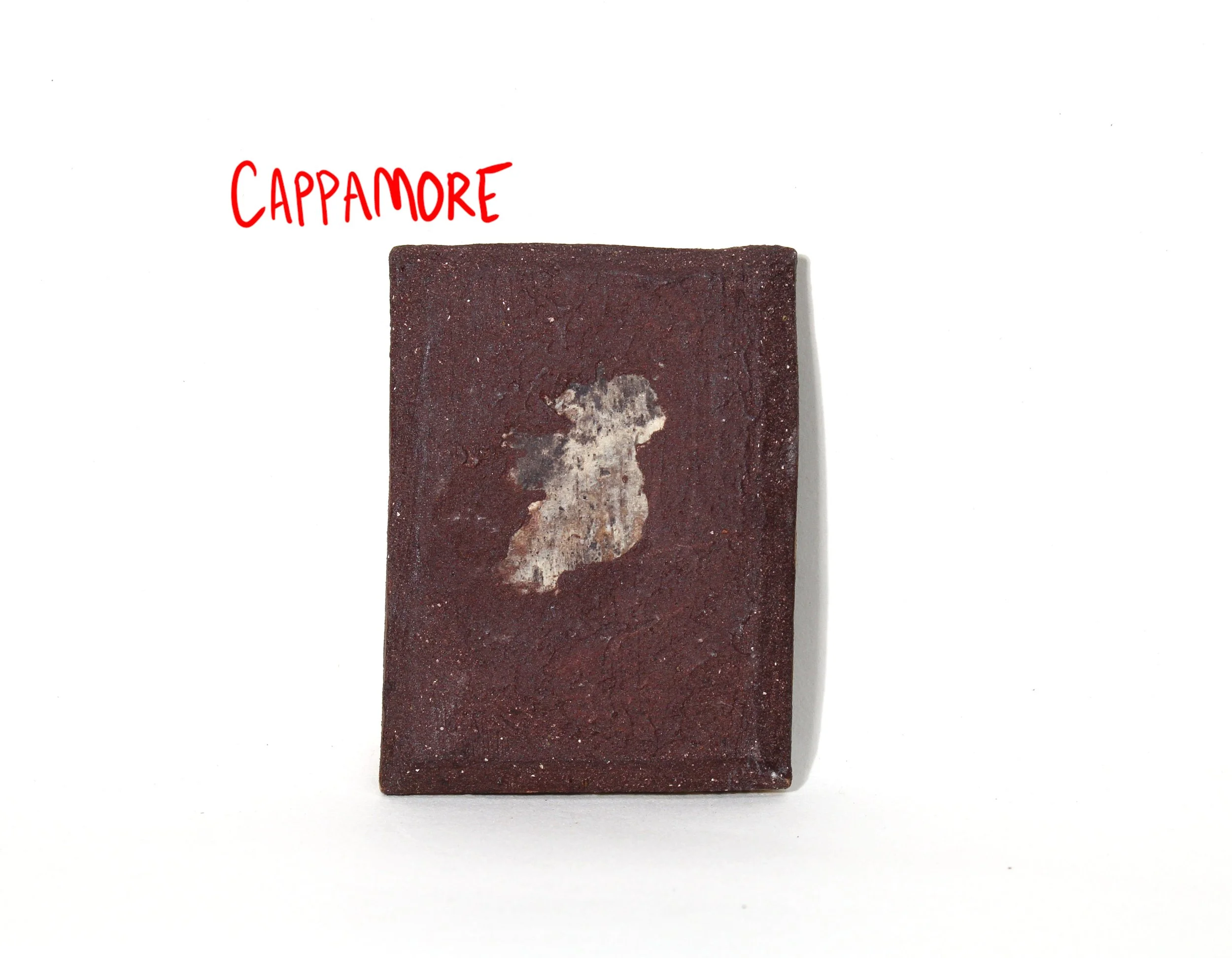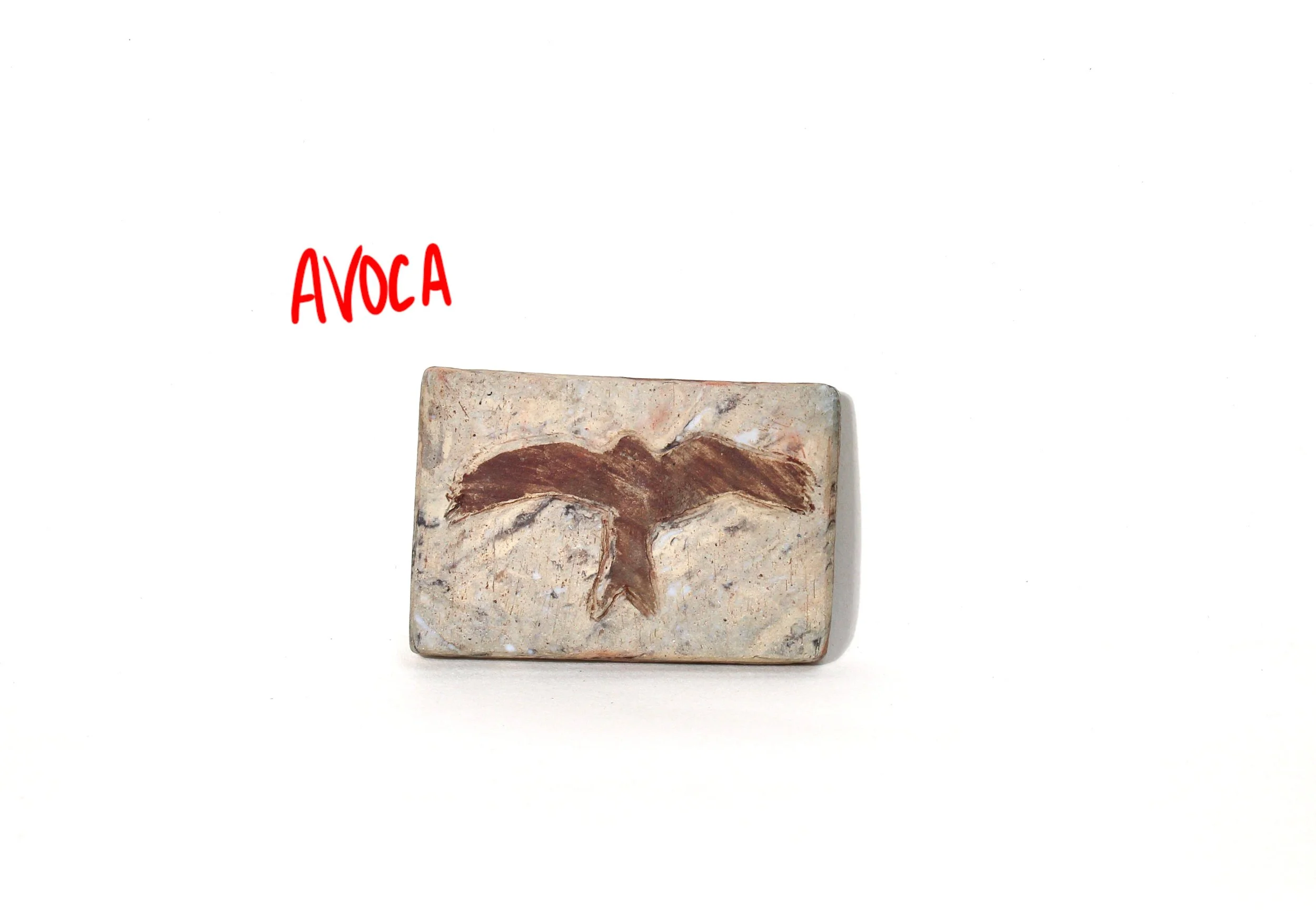You may notice that one of the tiles in this series does not have my usual Éire inlay design. Instead, I decided to cover the surface with a raised figure of a Red Kite, inspired by the area I got the clay from in the first place.
Red Kites are very elegant Birds of Prey, clearly distinguishable (both in clay and in real life) by their red-brown feathers and their iconic long forked tails. The Red Kite went extinct in Ireland in the late 19th century, due to a mixture of habitat destruction and hunting. They were reintroduced to County Wicklow in 2007 by a collaborative effort between the National Parks and Wildlife Service and groups of Irish and Welsh charities. In 2012, after 200 years of extinction, the first Red Kite born in Ireland hatched its own chicks- a major milestone for the species.
Red Kites like to spend their winters together in large flocks. The biggest flock of Red Kites in Ireland can be found very close to the town of Avoca in County Wicklow. Keep an eye out next time you’re in the area, as you’ll see plenty of Red Kites gliding above you. If you decide to head up the ‘Red Kite Walk’ (where I got this clay), you’ll be practically eye-level with the Kites.
They’re still listed at a ‘Red’ level of concern according to the ‘Birds of Conservation Concern in Ireland’ list, and ‘Near Threatened’ in Europe. According to the ‘National Biodiversity Data Centre’ (of Ireland), they’re still very threatened by IDIOTS poisoning them (these are my words, not the NBDC’s). But aside from those IDIOTS, Red Kites are doing pretty well along the East Coast.
In the spirit of ‘Leave No Trace’, I want to assure you that the amount of clay that I harvested from each site was minimal- I took no more than what would be stuck to your shoes if you were to walk through it on a muddy day. It is extremely important to me that the environmental and ecological impact of everything that ORLAWITHAFADA does is as low as possible.





